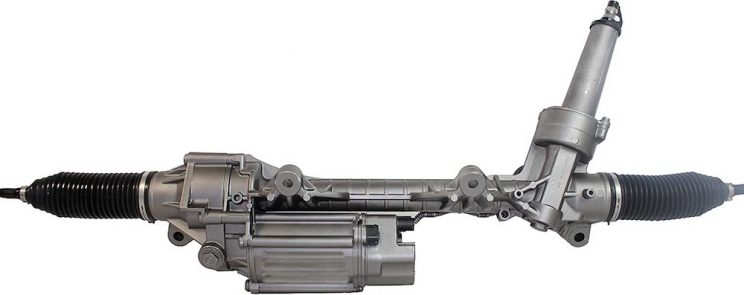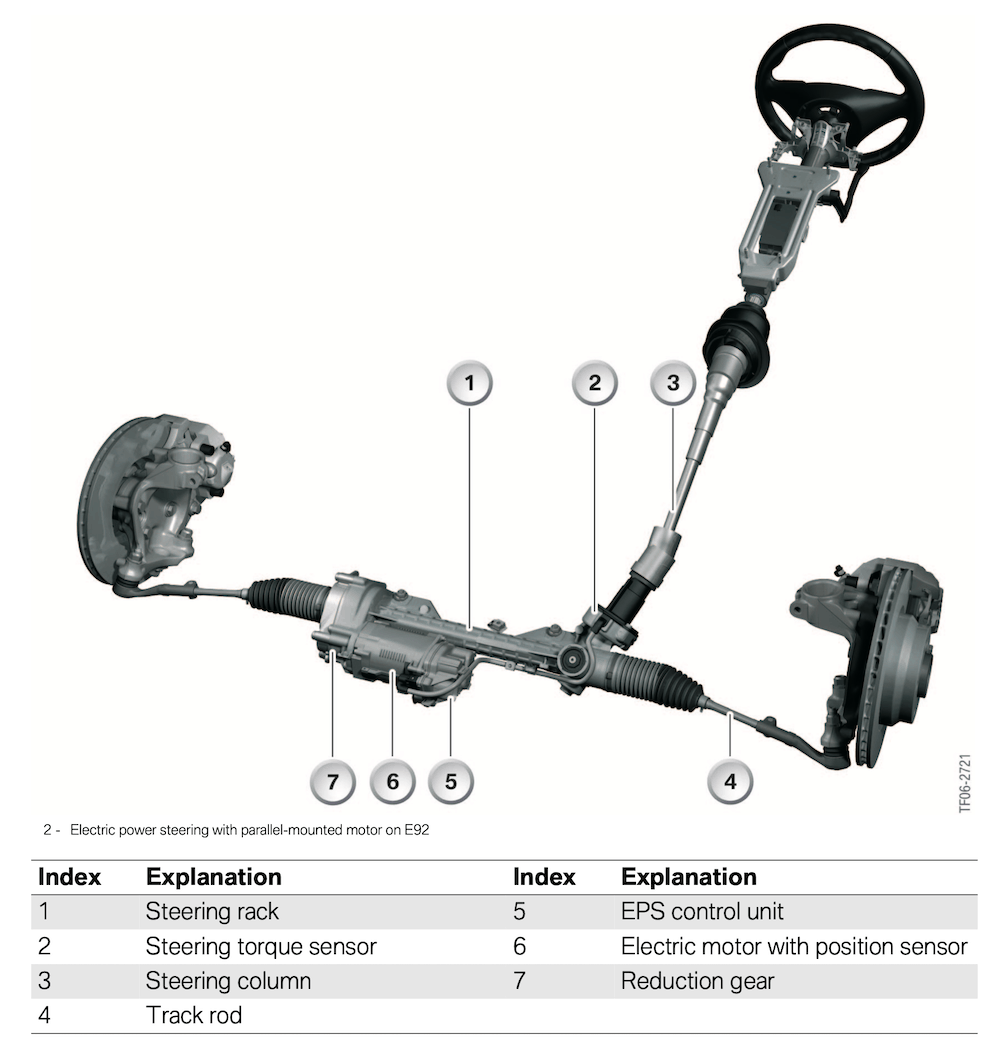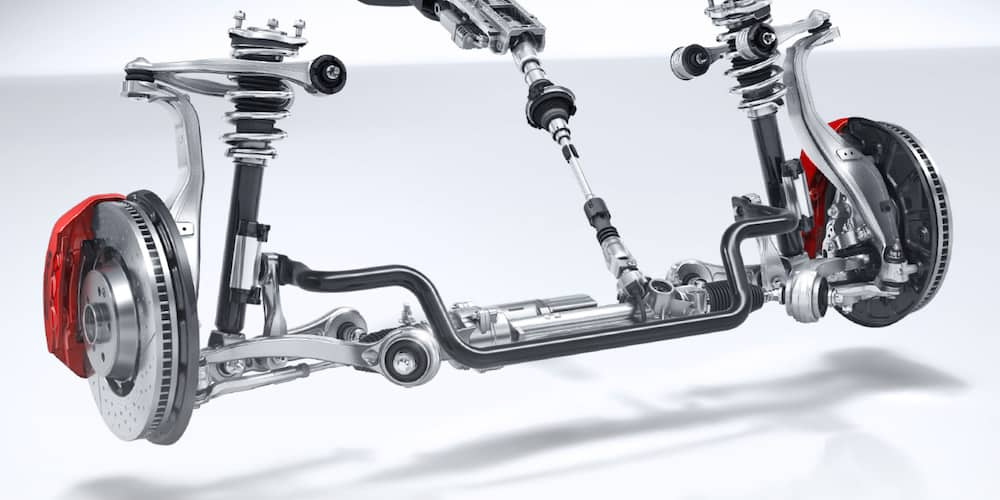
Classic BMWs are true drivers cars, loved for their unique driving experience while offering exceptional driver feedback. This driver feedback felt through the steering wheel was not only a result of superior chassis and suspension tuning, but also through an exceptional hydraulic steering system. Modern BMWs have gone away with hydraulically assisted steering in favor for electric power steering (EPS) system. Below we will go over the basics of this new system, how it works and the advantages it offers.
When was BMW electronic power steering introduced?
BMW started using electric power steering (EPS) on the Z4 E85 Roadster and E86 Coupe models (2002-2008). This first-generation system features a brushless motor attached to the upper part of the steering column. Subsequently, the E92 330d was the second model to feature EPS, but with a second-generation system. This revised system features an electric motor attached parallel to the steering rack (see item 6 below). The main reason for the switch from hydraulic to electric was to reduce C02 emissions, further explanation in more detail below.

Source: BMW
How does EPS (Electric Power Steering) work?
A steering rack converts the steering force applied by the driver to the turning wheels through a rack and pinion. EPS is much like hydraulic power steering, in that it consists of a steering rack, but with one difference. Rather than a hydraulic pump pushing power steering fluid through the rack for assistance, an electric motor attaches to the steering rack to provide assistance in turning the wheels instead. The mechanical connections between the EPS system and the hydraulic system are nearly identical spanning from the steering wheel to the road wheels. As a result, minimal changes need to be made to a vehicle to adapt to the new EPS system.
Why did BMW switch to electric power steering?
Like most new features on modern vehicles, efficiency and lower emissions are the driving force behind automobile changes. Consequently, electric power steering is no exception. A traditional hydraulically assisted steering pump is constantly running, usually belt-driven off the engine, which robs power. However, instances exist for no required assisted steering, such as driving in a straight line on the freeway. This is an advantage of the electric power steering, it is activated only when required. EPS does not run off mechanical engine power but rather electricity. EPS equipped vehicles are programmed to only turn on as required. As a result, fuel consumption reduces and the effective power output of the combustion engine is increased.
For comparison, when an engine idles with no steering movement is present an electric power steering motor consumes around 10 watts of energy. On the contrary, a hydraulic power steering system uses 300-400 watts of power. Likewise, a comparison can be made for power required at high inputs. Over ownership of the vehicle, these efficiency savings add up. The efficiency of electric-powered steering saves around 1 mpg. So, on a 14-gallon fuel tank, an additional gain of 14 miles of distance covered compared to the traditional hydraulic system. Consequently, when a driver uses less fuel to go farther, C02 emissions decrease.
What happens if the electric motor fails during driving?
A safety feature of EPS is that if the electronic motor fails, steering can still be controlled safely without the assist. In contrast, hydraulic steering, it is NOT safe to run your hydraulic steering pump dry without lubricant. It will destroy the pump as the power steering fluid doubles as a lubricant for the inner workings of the pump. Running your power steering pump without fluid is akin to running your engine without oil. Moreover, while electronic motors usually fail without warning, a hydraulic system will fail over time and usually give warning signs before complete failure.
Further advantages of EPS (Electric Power Steering):
➊ Lack of power steering fluid is better for the environment
➋ Active center return
➌ Tuned steering feel specific to that vehicle
➍ Isolated from suspension vibration, increasing comfort
➎ Speed-dependent power assist (not RPM dependant)
➏ Fuel savings of approximately .2 liters per 100km
➐ No hydraulic leaks
➑ Less maintenance due to lack of hoses, belts etc.
➒ Lowers manufacturing costs (fewer parts)
➓ Offers different drive modes
Disadvantages of EPS (Electric Power Steering):
➊ Lack of road feel, driver feedback
➋ Less vehicle personalty, feels generic, less premium
➌ The electric motor can fail suddenly without warning
➍ Parts usually can’t be rebuilt
As electric power steering develops and refines after each generation, the system will greatly improve to get closer to a traditional hydraulic feel. Will electronic power steering ever be as good as a hydraulic system in providing driver feedback? Likely not. Older BMWs have a unique driving experience that cannot be replicated given modern regulations and requirements. The next iteration of steering will be “drive by wire” which implies that zero mechanical connection exists between the steering wheel and the turning wheels. A steering rack will no longer have use in this system, only a connection of wires will exist as a connection between the steering wheel and front wheels.

BMW Electric Power Steering
Where can I learn more fun facts about BMW?
Learn more BIMMERtips fun facts by clicking HERE


